What's New
Displaying results 2621 - 2630 of 4052
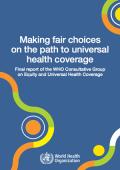
Resource | Publications,
Universal health coverage (UHC) is at the center of current efforts to strengthen health systems and improve the level and distribution of health and health services. This document is the final report of the WHO Consultative Group on Equity and Universal Health Coverage. The report addresses the key issues of fairness and equity that arise on the path to UHC. As such, the report is relevant for every actor that affects that path and governments in particular, as they are in charge of overseeing and guiding the progress toward UHC.
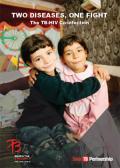
Resource | Fact Sheets,
TB is the leading cause of death among people living with HIV (PLHIV). One in five HIV-related deaths is caused by TB. Untreated TB in people with HIV can lead to death in weeks.
It is estimated that one-third of the 40 million people living with HIV/AIDS worldwide are coinfected with TB. Around 75 per cent of coinfected patients live in the African Region. People living with HIV and infected with TB are 30 times more likely to develop active TB disease than people without HIV. TB is also more difficult to diagnose in people living with HIV.
The new Post-2015 Global Strategy and Targets For Tuberculosis Prevention, Care and Control, strives to end TB as a global pandemic (an average less than 10 tuberculosis cases per 100 000 population) and to cut the number of deaths from TB by 95% by 2035.

Resource | Publications,
Antimicrobial resistance (AMR) represents a growing threat to global public health and security. New resistance mechanisms continue to emerge and spread, undermining the world’s ability to treat common infectious diseases. Surveillance to monitor the emergence and spread of drug resistance is a crucial component of the global strategy to combat AMR.
This special supplement to the Global Tuberculosis Report 2014 marks the 20th anniversary of the Global Project on Anti-Tuberculosis Drug Resistance Surveillance and its TB Supranational Reference Laboratory Network. It remains the oldest and largest project on AMR surveillance in the world and guides the response to the epidemic of multidrugresistant tuberculosis (MDR-TB) at national and global levels.
The first half of the document highlights the progress made in surveillance of anti-TB drug resistance between 1994 and 2013 as well as recent innovations. The second half of the document profiles the global status of the response to the MDR-TB epidemic, which remains a mix of success and failure. Following WHO’s pronouncement in 2013 that MDR-TB represented a public health crisis, five priority areas for action, from prevention to cure, are defined.
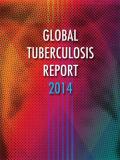
Resource | Publications,
Tuberculosis (TB) remains one of the world’s deadliest communicable diseases. In 2013, an estimated 9.0 million people developed TB and 1.5 million died from the disease, 360 000 of whom were HIV-positive. TB is slowly declining each year and it is estimated that 37 million lives were saved between 2000 and 2013 through effective diagnosis and treatment. However, given that most deaths from TB are preventable, the death toll from the disease is still unacceptably high and efforts to combat it must be accelerated if 2015 global targets, set within the context of the Millennium Development Goals (MDGs), are to be met.
TB is present in all regions of the world and the Global Tuberculosis Report 2014 includes data compiled from 202 countries and territories. This year’s report shows higher global totals for new TB cases and deaths in 2013 than previously, reflecting use of increased and improved national data.
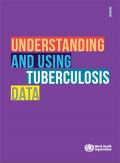
Resource | Guidelines,
Country health information systems provide a rich source of data on the burden of disease caused by tuberculosis (TB) and the effectiveness of programmatic efforts to reduce this burden, both of which are crucial for public health action. However, the available data are often underused, or not used at all. At least in part, this may reflect the absence of clear guidance on recommended approaches to the analysis of such data.
This handbook is designed to address this gap through detailed practical examples of the analysis of TB surveillance data, in particular TB notification data, data from surveillance of anti-TB drug resistance, and mortality data compiled in national vital registration systems. It starts from the most basic kinds of analyses, and progresses to the description of more challenging topics such as the estimation of disease burden using multiple sources of evidence, including data from special surveys.
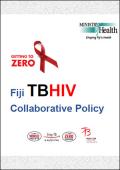
Resource | Publications,
This policy document focuses on a collaborative move for the TB and HIV Units of Fiji to have activities that address the interface of the tuberculosis and the HIV and AIDS epidemics either it be from the preventative or the holistic care of patients who are co-infected.
Human immunodeficiency virus (HIV) is the single greatest risk factor for the development of tuberculosis (TB) disease and TB is the commonest opportunistic infection in people living with HIV infection. The increasing prevalence of HIV infection in Fiji will present new and ongoing challenges to the national control of TB at all levels.
This document aims to provide the Public and Private health sectors in Fiji to ensure that appropriate preventative, treatment and care of all TB/HIV patients has been delivered in an efficient manner.
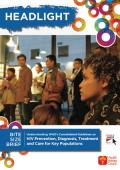
Resource | Guidelines,
This issue of Bite Size Briefs is a summary of the Consolidated Guidelines on HIV Prevention, Diagnosis, Treatment and Care for Key Populations, which was published by the World Health Organization (WHO) in July 2014.
The Consolidated Guidelines on HIV Prevention, Diagnosis, Treatment and Care for Key Populations aim to support countries provide more effective and comprehensive HIV services for the key populations, including men who have sex with men (MSM) and transgender people and include discussion of specific issues relating to adolescent key populations. Although, there is still a lack of evidence to support recommendation of PrEP to transgender women. In this brief we highlight the recommendations made in the Guidelines that are most relevant to MSM and transgender people.
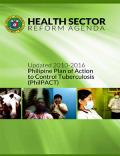
Resource | Publications,
The 2010–2016 Philippine Plan of Action to Control TB or PhilPACT was formulated through a participatory process to serve as the country’s road map in reducing the problem of tuberculosis. It was issued by the Department of Health (DOH) through Administrative Order 2010-0031. Consistent with the then Health Sector Reform Agenda, the plan contains four objectives, eight strategies and 30 performance targets. In his preface to the document, Secretary Enrique T. Ona states that “a sound strategy and a strong partnership between local government units, civil society, technical and financial partners are the keys to the success of the plan.”
Three years had passed since PhilPACT was initiated in 2010 under the leadership of the DOH through the National TB Control Program (NTP). Its monitoring and evaluation framework provides for a stakeholderparticipated midterm-evaluation in early 2013.
This updated PhilPACT will guide the country as it intensifies its efforts to control TB in 2014–2016. Per the original document, "expected users are policy makers, managers of TB control program at all levels, implementers, local and international partners, and everyone who dreams of and is committed to working towards a TB-free Philippines."
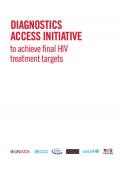
Resource | Publications,
The aim of the new initiative is to leverage improved, accessible, affordable and optimally used diagnostic technologies and strategies to ensure achievement of bold new HIV treatment targets for 2020.
The world is uniting around a final set of treatment targets to lay the groundwork to end the AIDS epidemic as a public health threat by 2030. Through national, regional and global-level consultations, diverse stakeholders are pledging to ensure that by 2020.
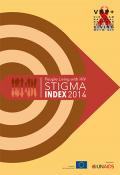
Resource | Publications,
HIV-related stigma and discrimination are recognized both globally and in Viet Nam as primary barriers to accessing essential prevention, treatment and care services. The People Living with HIV Stigma Index was designed to address the need for a quantitative recording and analysis of the different levels and types of stigma and discrimination experienced, as well as changes in trends and with time, to inform evidence-based policy and programmes. The process of conducting the Stigma Index is as important as the result: the survey is conducted “by PLHIV, for PLHIV”.
In Viet Nam the Stigma Index has been conducted by the Viet Nam National Network of People Living with HIV (VNP+). Following a first round in 2011, a second survey was conducted in 2014 to assess both current stigma and discrimination and any changes since 2011.





